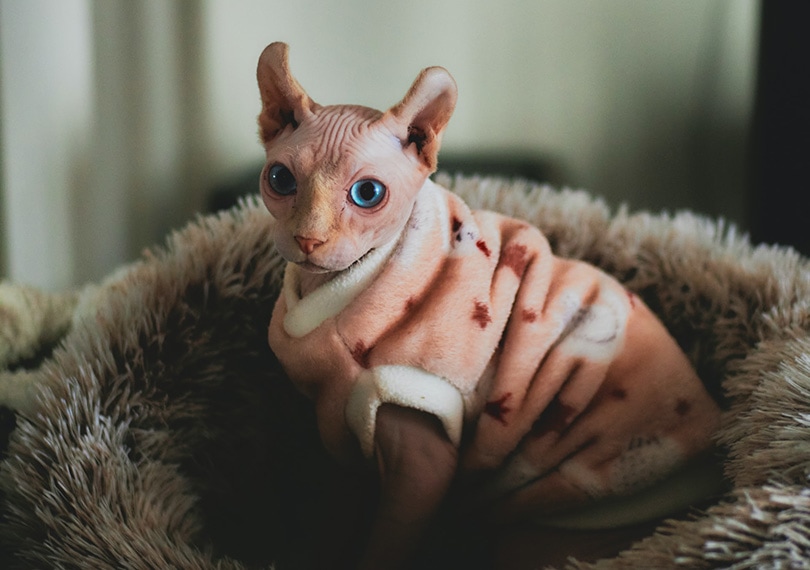
Note: This article’s statistics come from third-party sources and do not represent the opinions of this website.
The first pet insurance policy issued in the United States was in 1982, and it was for one of the dogs portraying the popular character, Lassie. Since then, the pet insurance industry has grown exponentially and has more than doubled within the past 4 years.
Despite the immense growth, most pets in the US don’t have pet insurance. With rising trends in the cost of veterinary care, pet insurance is projected to continue growing and become more common amongst pet owners. Here’s what we know so far about the relationship between US pet owners and the pet insurance industry.
Click to Skip Ahead
How Many US Pet Owners Have Pet Insurance in 2024?
- Approximately 4.41 million pets in the US have pet insurance.
- California has the largest share of insured pets with 19.3% of pets under an insurance plan.
- 7% of insured pets are dogs.
- As of 2022, only 3% of pet dogs have pet insurance.
- 6% of dog owners opt for accident and illness pet insurance plans.
- As of 2021, approximately 727,000 cats have pet insurance.
- The number of cats with pet insurance increased by 26.7% in 2020.
- 7% of pet ferrets have pet insurance.
- 1% of pet reptiles have pet insurance.
- 3% of pet fish have pet insurance.
- The total premium volume of pet insurance in 2021 was $2.837 billion.
- The average cost of pet insurance is $49/month for dogs and $29/month for cats.
- When compared to the previous year, the cost of veterinary care in 2021 rose by 7.2%.
- The pet insurance industry in the US has a penetration rate of 2.48%.
- From 2020-2021, the pet insurance industry had a 27.7% annual growth rate.
Pet Insurance in the US
1. Approximately 4.41 million pets in the US have pet insurance.
(NAIC)
Ever since the first pet insurance policy was sold, the pet insurance industry has been growing. However, even though it may sound like 4.41 million insured pets is a large number, it’s pretty small when compared to the 69 million pet dogs and 45 million pet cats living in the US.

(PawlicyAdvisor)
Of all the pets with insurance, the largest number of them live in California. The next state with the most pets with a pet insurance policy is New York with 8.7%. New Jersey has 5.5% of pets with insurance, and Texas follows with 4.8%.
Dogs and Pet Insurance
3. 7% of insured pets are dogs.
(NAPHIA)
The majority of pet insurance plans belong to dogs. Caring for dogs can come with steep medical care costs, especially for breeds that tend to have significant chronic illnesses as they age. So, it comes as no surprise that dogs would be the type of pet with the highest number of pet insurance policies.

4. As of 2022, only about 3% of pet dogs have pet insurance.
(Investopedia)
The pet insurance industry still has much room for growth as only 3% of pet dogs have insurance. Since dogs tend to have relatively high medical care bills, more dog owners may start to see pet insurance as a budget-friendly option for veterinary care.
When getting pet insurance its always worth comparing plans to see which one is right for you.
Top Rated Pet Insurance Companies:
Having a pet insurance plan can help you anticipate budgets better, and the ability to afford to pay for certain services and procedures gives them more opportunities to care for their dogs.
5. 6% of dog owners opt for accident and illness pet insurance plans.
(PawlicyAdvisor)
The most popular type of pet insurance plan is the accident and illness plan. This plan covers medical costs related to unpreventable accidents and illnesses that aren’t tied to pre-existing conditions.
Cats and Pet Insurance
6. As of 2021, approximately 727,000 cats have pet insurance.
(NAPHIA)
Cats are the second largest group of pets that have pet insurance. However, as there are millions of pet cats, the current number of insured cats is relatively low. Although dogs currently dominate the pet insurance industry, the growth rate of cats getting insurance plans is increasing, so it’s very possible to see the percentages even out over time.

7. The number of cats with pet insurance increased by 26.7% in 2020.
(PawlicyAdvisor)
Despite the small percentage of cats having pet insurance, cat insurance plans have one of the fastest growth rates in the industry. Cats are also growing in popularity in the US, which means that more pet cats can end up having pet insurance plans.
Other Pets and Pet Insurance
8. 7% of pet ferrets have pet insurance.
(AVMA)
Pet ferrets are the largest group of small pets with insurance. Ferrets have several vaccines and medications that they need, so it’s no surprise that having an insurance plan for them to help cover these costs is appealing to ferret owners.

9. 1% of pet reptiles have pet insurance.
(AVMA)
Pet reptiles are the second largest group of exotic pets that have insurance. Reptile owners can save on costs related to diagnostic tests, medication, and hospital stays. Since many reptiles have longer lifespans, having pet insurance can be a cost-saving option for many pet owners.
10. 3% of pet fish have pet insurance.
Pet fish are the smallest group of pets with pet insurance. Currently, options are pretty limited when it comes to pet insurance for fish. However, more companies are catching on, and growth in investments in pet insurance for fish will be seen within the next several years.
Pet Insurance Industry Trends
(Insurance Information Institute)
2021 saw the largest amount in premium volume. If trends follow as predicted, the premium volume will continue to rise as more pet owners get pet insurance plans. By 2027, experts anticipate that the total premium volume of pet insurance will reach $3.8 billion.

12. The average cost of pet insurance is $49/month for dogs and $29/month for cats.
(Insurance Information Institute)
One factor that impacts pet insurance rates is location. New York and Minnesota have some of the most expensive pet insurance rates, while Oregon and Florida have cities and towns with some of the cheapest pet insurance rates.
Between 2016 to 2020, pet insurance premiums rose by 24.2% year over year. So, it appears that pet insurance rates will continue to rise each year.
13. When compared to the previous year, the cost of veterinary care in 2021 rose by 7.2%.
(Business Wire)
One of the reasons why more pet owners are getting pet insurance is because veterinary care costs are steadily rising. If pet owners get the right pet insurance plans, they can end up saving on significant costs related to expensive tests, surgeries, and medication.
14. The pet insurance industry in the US has a penetration rate of 2.48%.
(NAPHIA)
Currently, the pet industry has a low penetration rate. However, when examined with past years’ rates, it’s much higher, and experts predict that the rate may see a significant increase if more pet owners start to view pet insurance as a regular pet care expense.
15. From 2020-2021, the pet insurance industry had a 27.7% annual growth rate.
(NAPHIA)
In just 1 year alone, the pet insurance industry has had significant growth. With the mix of more people treating pets as family members and the rise in veterinary care costs, there’s very little chance that the growth rate will slow down within the next several years. Since so few pet owners have pet insurance, the growth rate is projected to increase in the next several years.
Frequently Asked Questions About Pet Insurance

What Factors Affect Pet Insurance Prices?
Pet insurance prices vary by location. Larger cities with higher living costs tend to have the highest average premium prices.
Your pet’s age and breed also affect premium prices. Older pets have higher rates, while kittens and puppies have the cheapest rates. Some pet breeds can have more expensive premiums if they tend to have a lot of significant health conditions as they age.
What Dog Breeds Have the Most Expensive Pet Insurance Rates?
Dog breeds that tend to have higher premiums are Bulldogs, Great Danes, Mastiffs, and Bernese Mountain Dogs.
In general, large dogs and purebred dogs have higher rates than mixed-breed dogs. Brachycephalic dogs with flat faces also tend to have higher insurance rates because they have a higher risk of needing surgery or advanced medical care.
What Cat Breeds Have the Most Expensive Pet Insurance Rates?
Cat breeds that tend to have higher premiums are Bengals, Himalayans, Maine Coons, Ragdolls, and Siamese. Like dogs, purebred cats and cats with flat faces tend to have higher insurance rates due to genetic conditions.
What Are the Different Types of Pet Insurance?
Accident-only plans only cover medical costs related to unforeseen and unpreventable accidents your pet may experience. These plans tend to have some of the cheapest rates because they don’t cover care for chronic illnesses or genetic conditions.
Accident and illness plans offer more comprehensive coverage that often includes hereditary health concerns and diagnosing illnesses. Some pet insurance companies will also include coverage for alternative therapies, dental care, prescription food, and behavioral issues.
Lastly, wellness plans help pay for routine care costs, like annual check-ups, vaccines, and initial heartworm tests. These plans don’t always help you save a significant amount of money unless you use every service covered under them. So, take time to think about what sort of care your dog needs at routine checkups before committing to a wellness insurance plan.
What Are the Disadvantages of Pet Insurance?
While pet insurance offers pet owners many cost-saving benefits, it may not be the most affordable expense for some people. For example, most companies don’t offer 100% reimbursement rates, and they have an annual limit for how much they’ll pay for medical bills. So, you could still end up paying a significant amount out-of-pocket.
Pet insurance also doesn’t help pay for any care related to a pre-existing condition, and they also have waiting periods that have to pass before your pet can start to receive coverage. So, if your pet already has a chronic illness before it gets on a plan, any treatment related to that illness is disqualified from coverage.
Conclusion
Pet insurance trends show that the industry will continue to grow through 2027. More people are acquiring pets, and more pets are being treated as family members. Combining these factors with rising veterinary care costs, more pet owners are likely to purchase pet insurance. Just keep in mind that not all pet insurance plans are created equally, so it’s important to do your research to determine which plan is appropriate for your pet and the most likely to help you save on pet care costs.
Featured Image Credit: Rawpixel.com, Shutterstock








